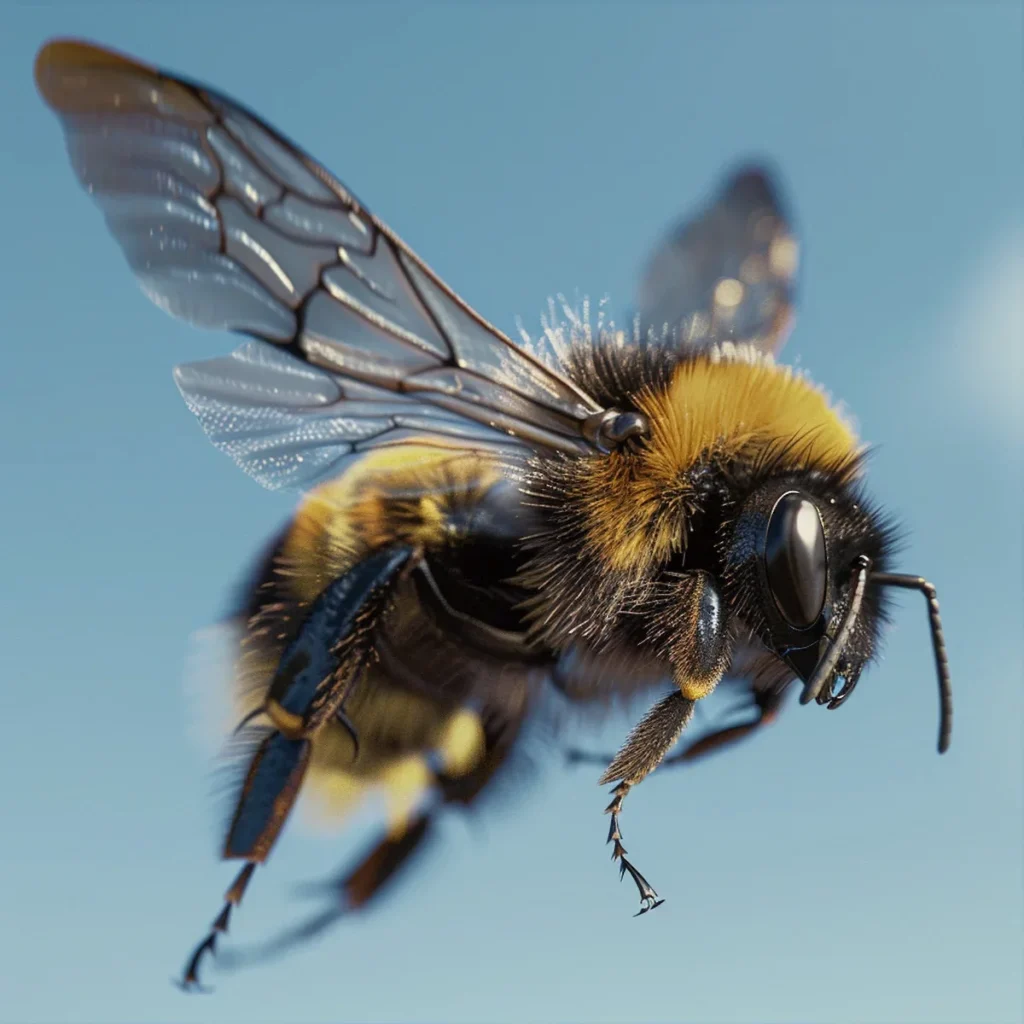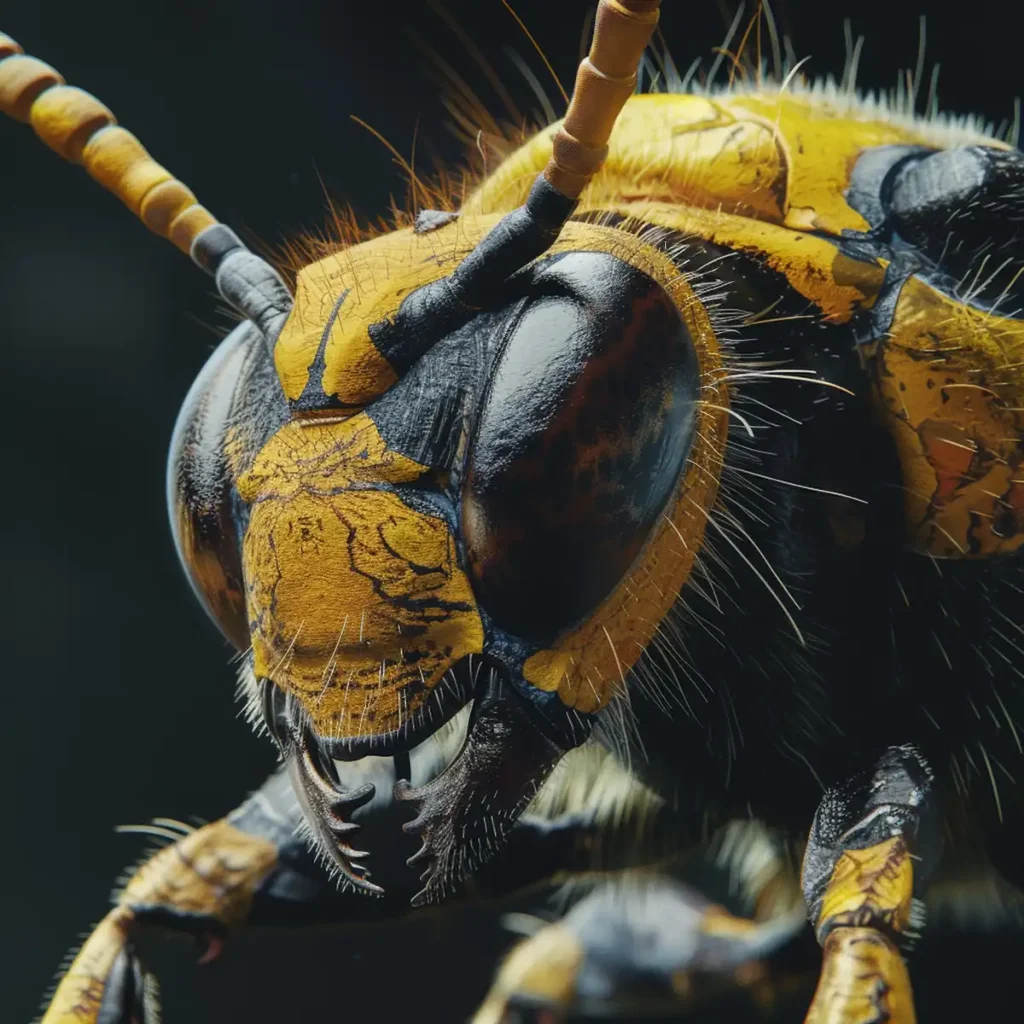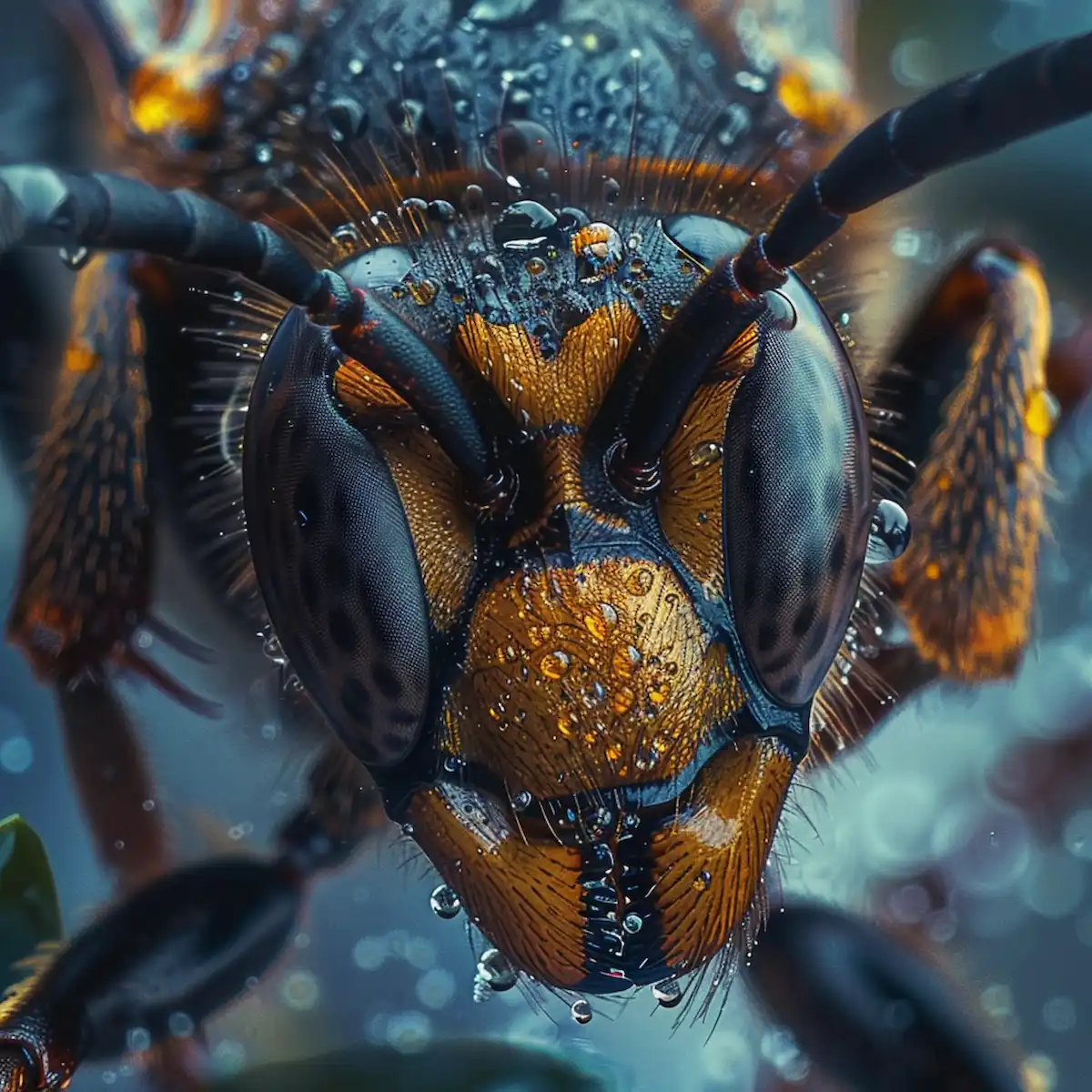Stinging insects, such as bees, wasps, and hornets, can benefit the environment but can also be a nuisance or even a danger to humans.
Identifying these insects is crucial for safe and effective pest management, especially during active seasons. This information will help you to differentiate among these common flyers and grasp their behaviors and habitats.

Bees
Bees are fuzzy insects with robust bodies and flat legs. They are generally non-aggressive and will only sting when provoked. The most common types you’ll encounter in your garden include:
- Honeybee: Golden-yellow color and black stripes.
- Bumblebee: Larger, rounder, and with pronounced yellow and black striping.
Bees are vital pollinators, so it’s essential to approach bee-related pest issues with care, aiming to relocate rather than exterminate.

Wasps
Wasps have sleek bodies and a shiny appearance and are generally more aggressive than bees, especially when threatened. They can sting multiple times, making them particularly troublesome near human dwellings. Common examples include:
- Yellow Jacket: Thin body, vivid yellow and black pattern.
- Paper Wasp: Browner with yellow markings.
Wasps are predators that feed on other insects and can be beneficial for controlling pest populations.

Hornets
Hornets are giant wasps, with some species reaching up to 55 mm long. The most common in North America is:
- Bald-faced Hornet: White and black color pattern, builds large, football-shaped paper nests.
Hornets are more aggressive than other wasps and can sting repeatedly, posing significant risks to humans when nests are disturbed.

Identifying Nests
- Bee nests: Honeybees build wax combs inside cavities such as hollow trees or within wall voids in structures. Bumblebees often nest in the ground or in dense grass clumps.
- Wasp nests: Made from paper-like material from chewed wood fibers and saliva. Found hanging in trees, under eaves, or along sides of buildings.
- Hornet nests: Constructed from papery material, these large, enclosed nests are often located high in trees or under house eaves.
Safety and Management
If you find a nest close to your home, handle the situation carefully to avoid provoking the insects to defend their home aggressively. For safe removal, contact professional pest control services. They can assess the situation and safely remove or relocate the nest, minimizing the risk to your family and insects.
Understanding the differences between bees, wasps, and hornets can help you manage them around your home. Each plays a vital role in the ecosystem, and controlling them responsibly helps maintain environmental balance. If stinging insects are causing problems in your area, contact Titan Pest & Wildlife’s experts. We offer solutions that protect both you and the essential creatures in our environment.


Knowing the difference between bees, wasps, and hornets is crucial for safety. This blog provides clear descriptions and tips on how to identify and handle these insects. Essential reading for outdoor enthusiasts!